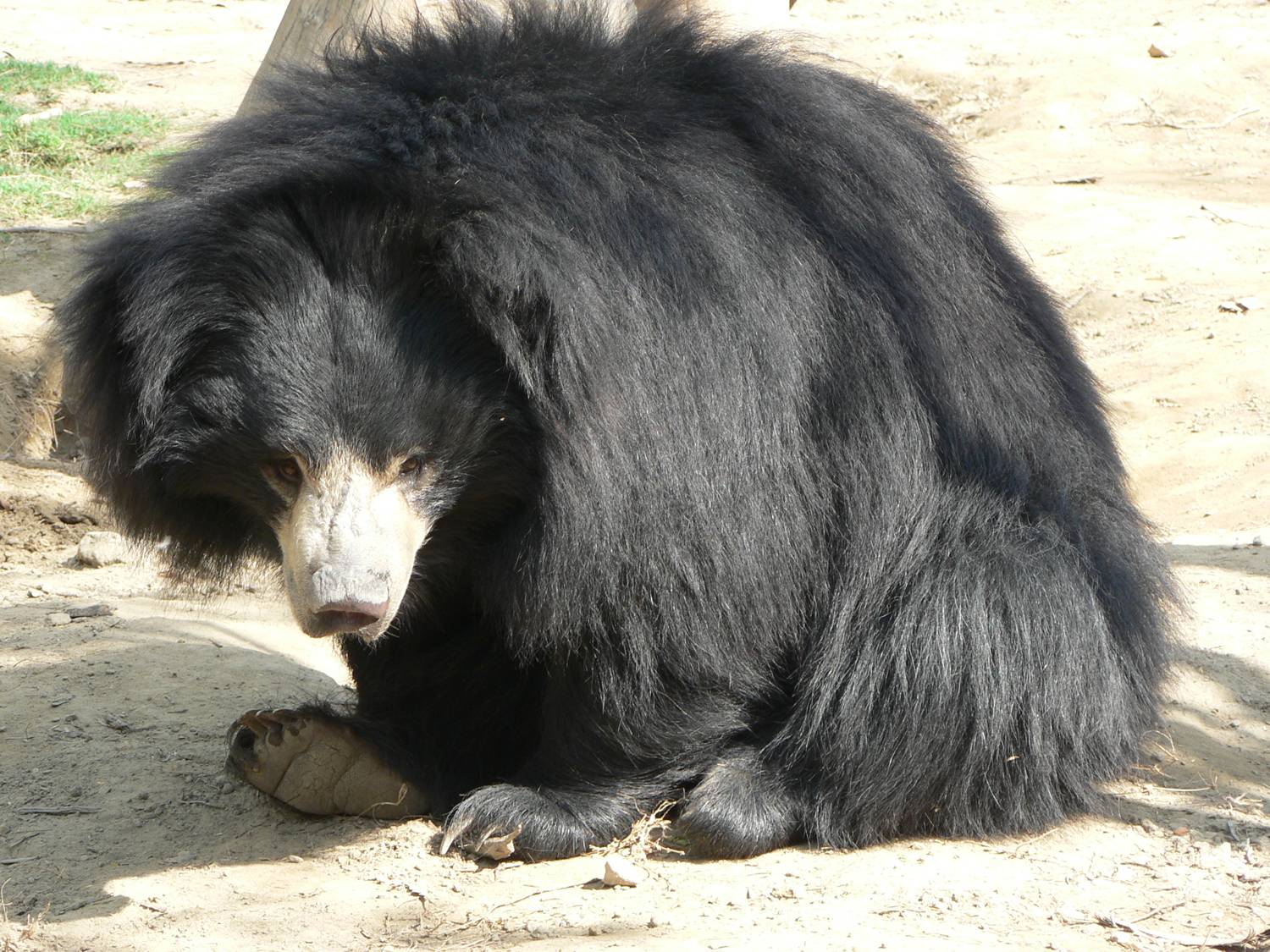The sloth bear is found primarily in central and south India, Bangladesh, Nepal, Bhutan and Sri Lanka. Two subspecies have formed since the division of India and Sri Lanka. They live primarily in extensive tropical, forested, sparsely populated, mountainous areas and tundras, that offer good shelter. The sloth bear’s most distinguishing feature is the snout: it is long and pale and has flexible lips that can be stretched out, and this bear has an exceptionally long and flat tongue . The sloth bear has long, black (rarely also rusty) shaggy hair, which parts on the head and hangs down on the sides. On the chest they have a white, horseshoe-shaped mark.
Diet
Mainly termites, ants and fruits. The sloth bear has very large claws with which they can easily open termite and ant hills. They will then disperse dirt and earth from the hill with vigorous blows and suck up the hill’s inhabitants with their tubular, extended tongue. They make so much noise in the process that it can be heard from 100 meters distance! This bear also likes to eat leaves, blossoms, fruits and beehives and will climb trees to reach these delicacies.
Hibernation
Like the giant panda, the spectacled bear and the Malayan Sun bear, the sloth bear does not hibernate.
Social behaviour
The sloth bear is generally nocturnal; during the day they sleep in natural dens or holes they have burrowed themselves, especially along rivers or in ravines. In spite of their rather awkward way of climbing, they enjoy going up trees to find food. Unlike most other bears, the sloth bear seems to enjoy the company of other sloth bears.
Status
The entire habitat of the sloth bear is under threat, both in Sri Lanka and in India. In the past, gypsies trained sloth bears to become dancing bears. This custom spread from India to the Middle East and Europe. There are currently many hundreds of dancing bears; they are particularly used to entertain the many tourists that visit India and its monumental treasures. The sloth bear is an important inhabitant of the forests of central and south India as well as Sri Lanka. Protection is necessary otherwise the sloth bear will very soon become extinct, as is the case in south China. The IUCN-status of the sloth bear is ‘Vulnerable’.
Factsheet Sloth Bear (Ursus ursinus)


